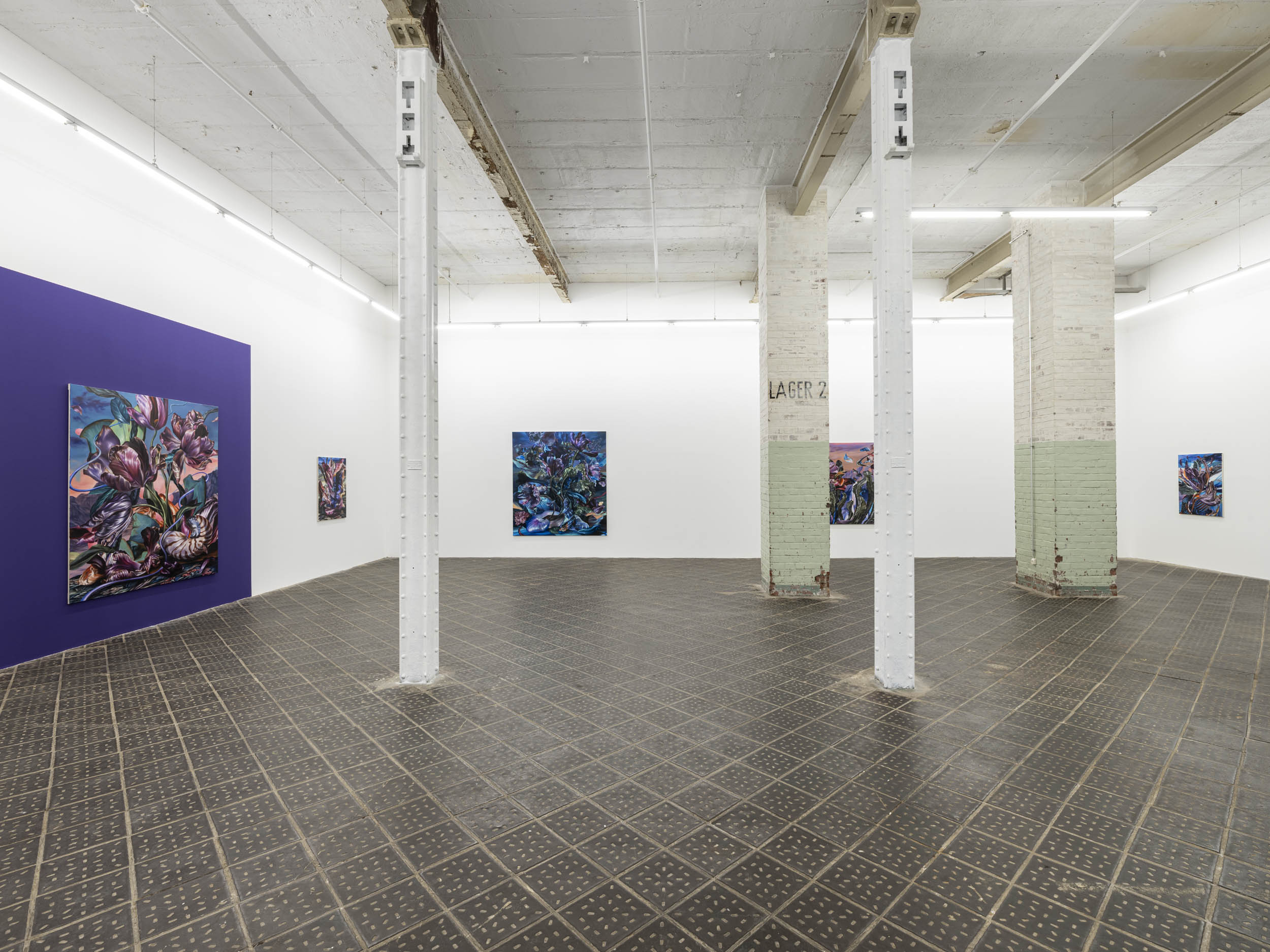
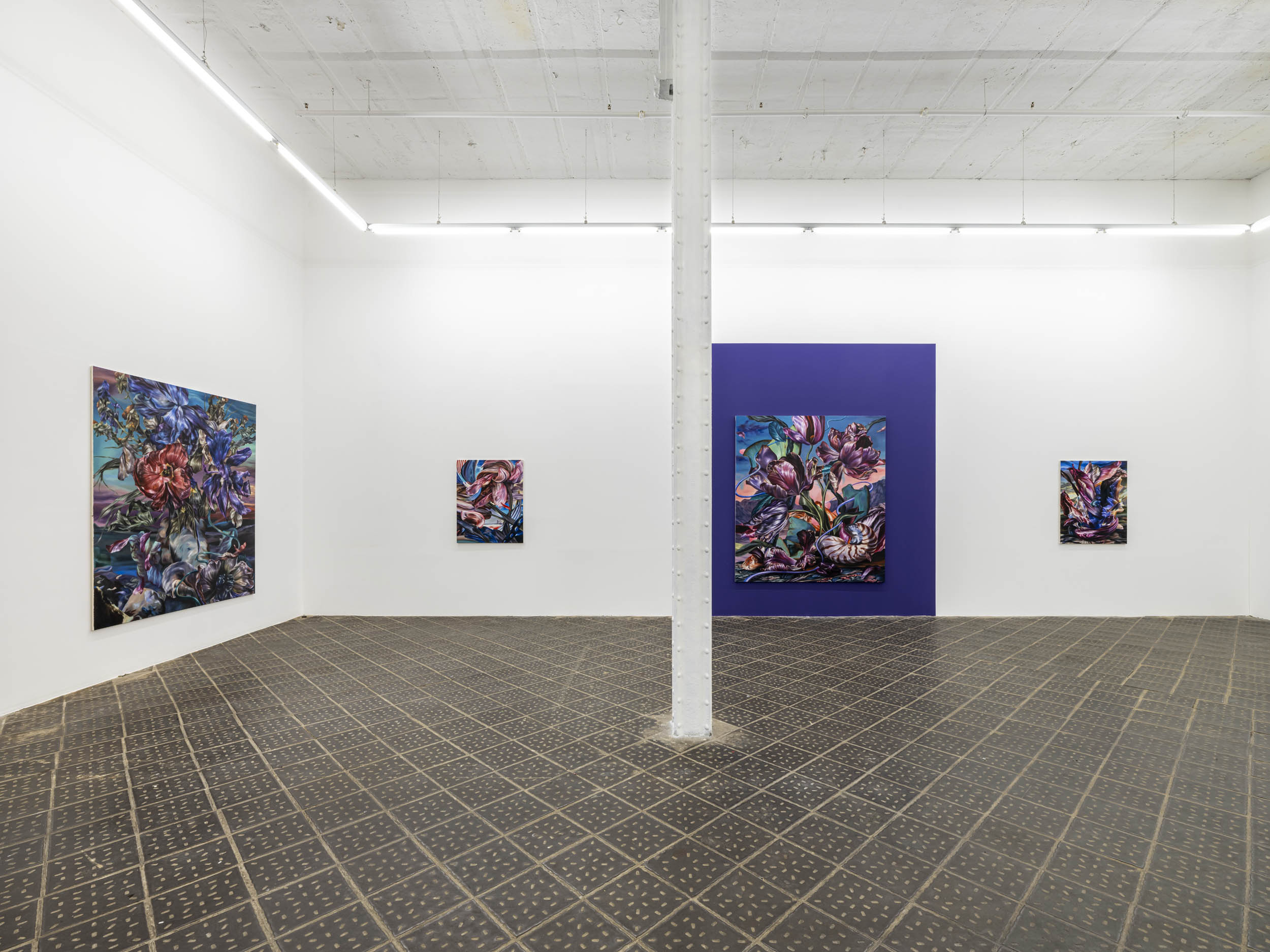
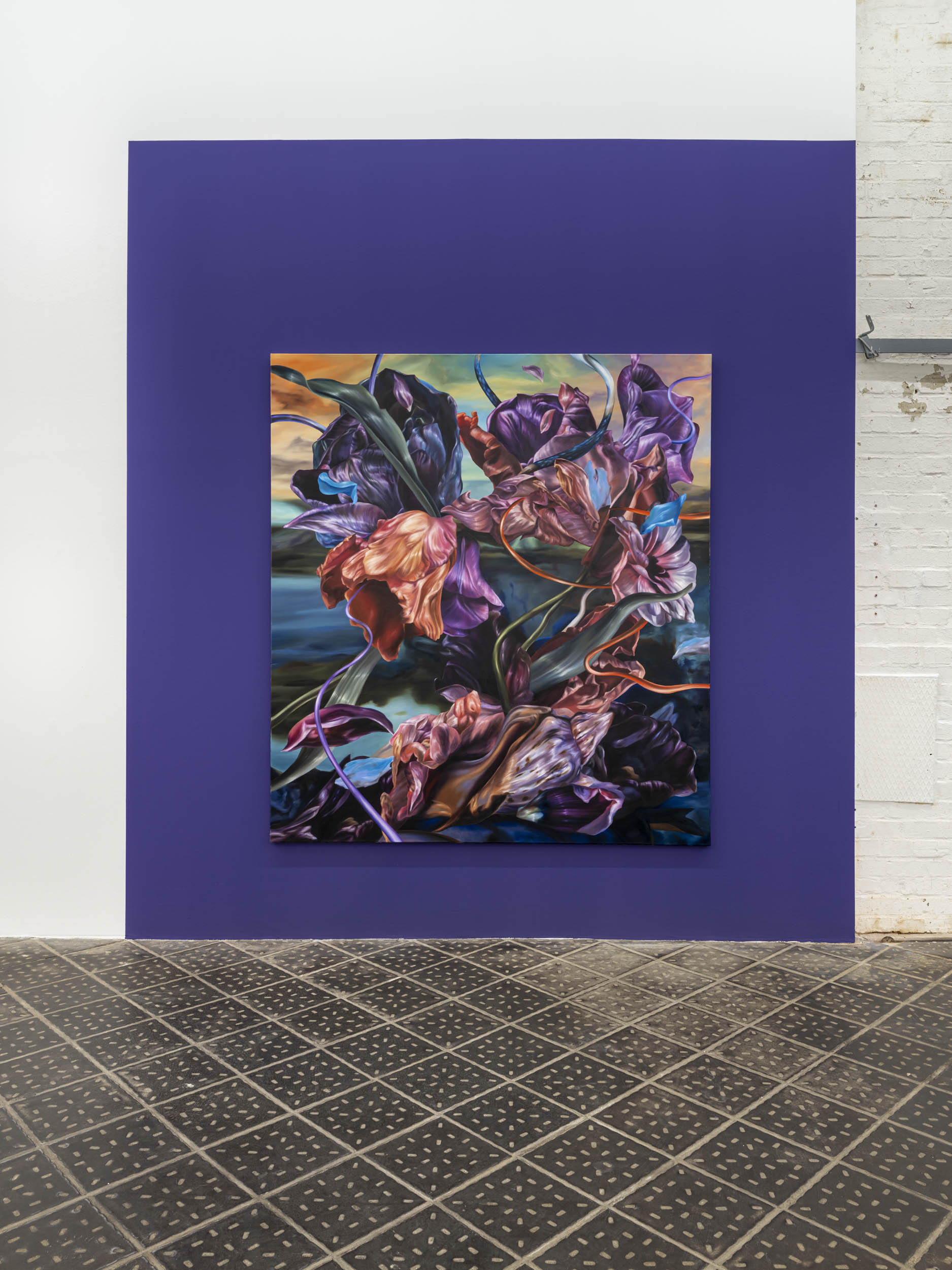
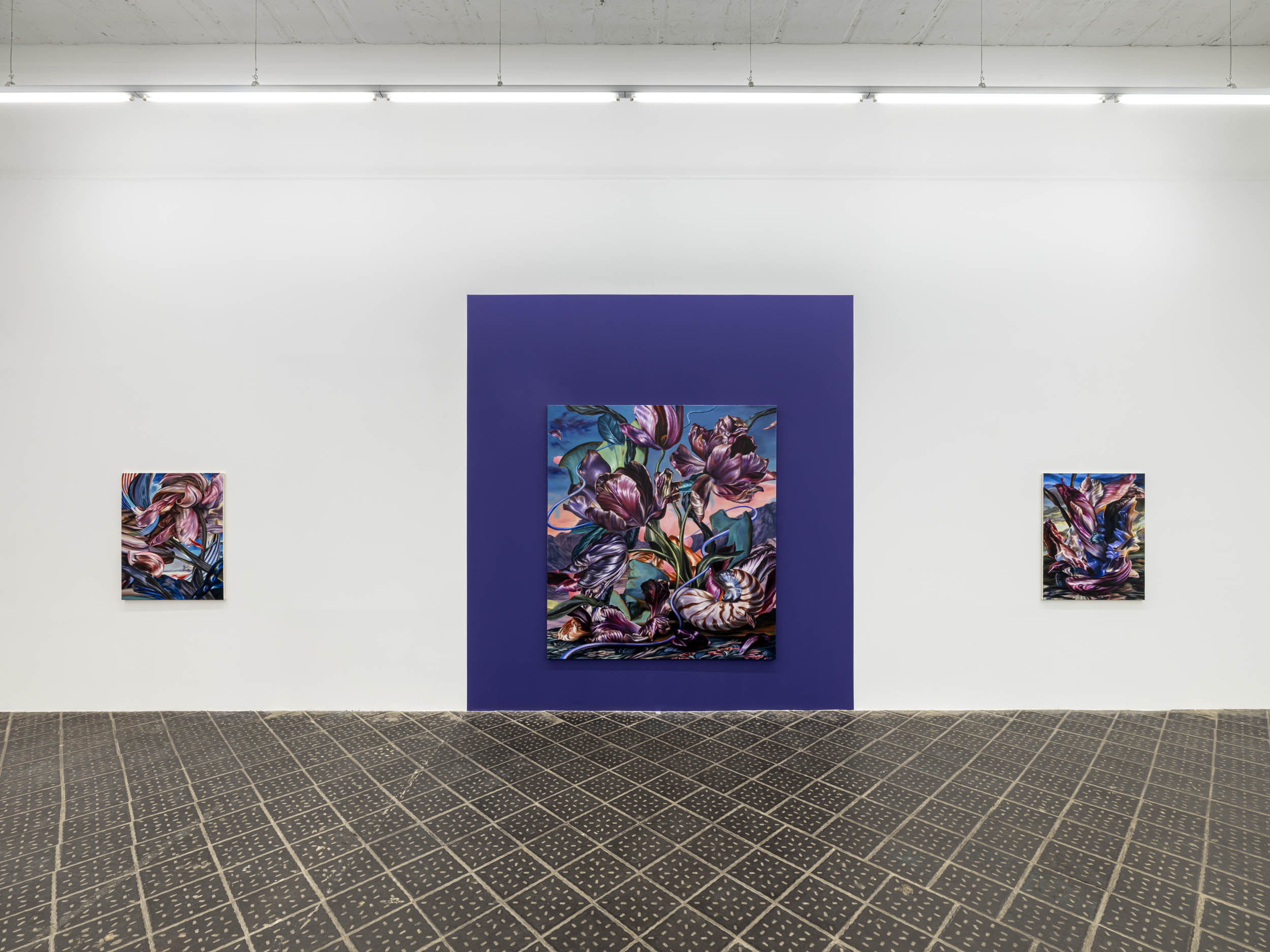
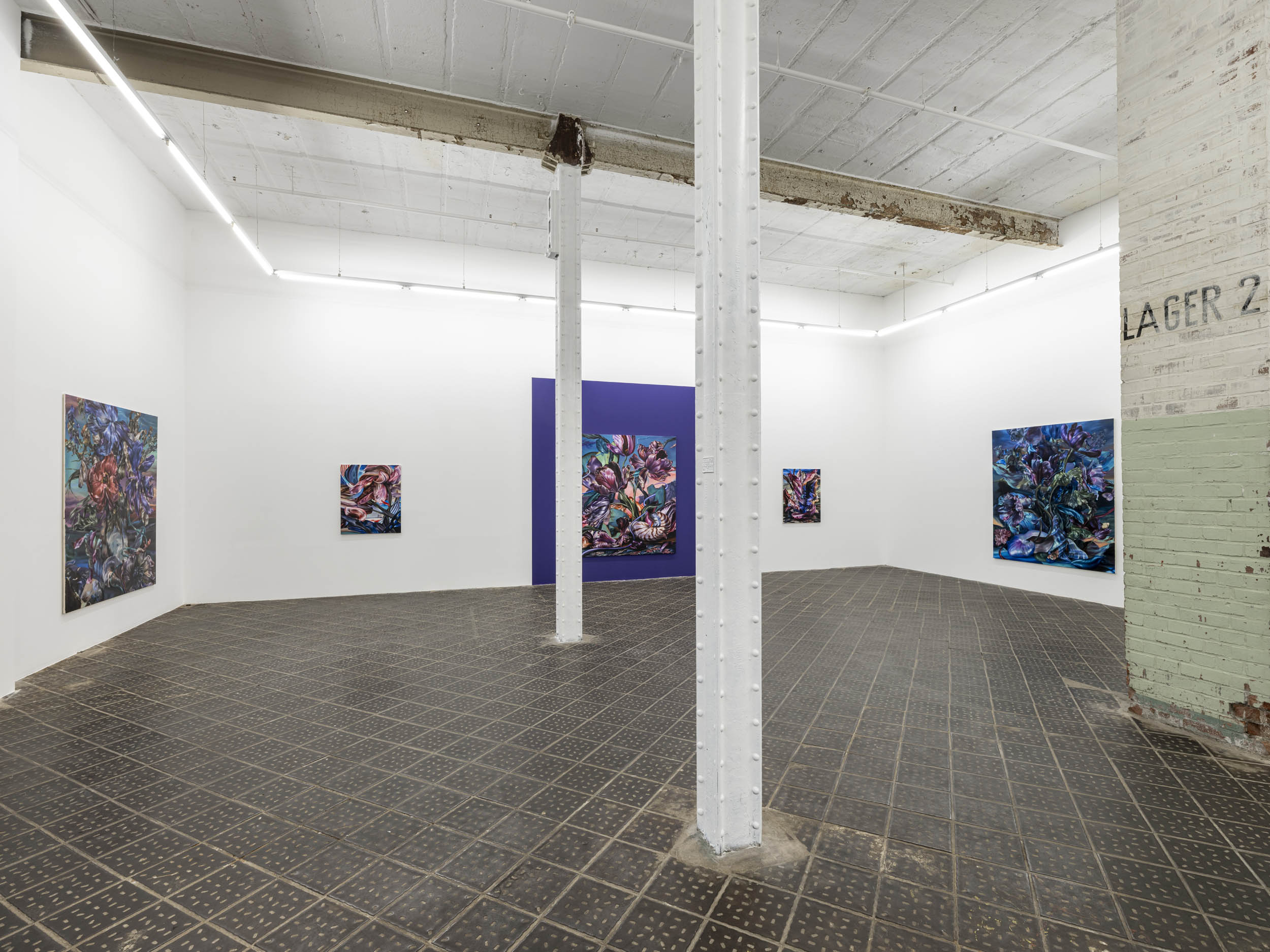
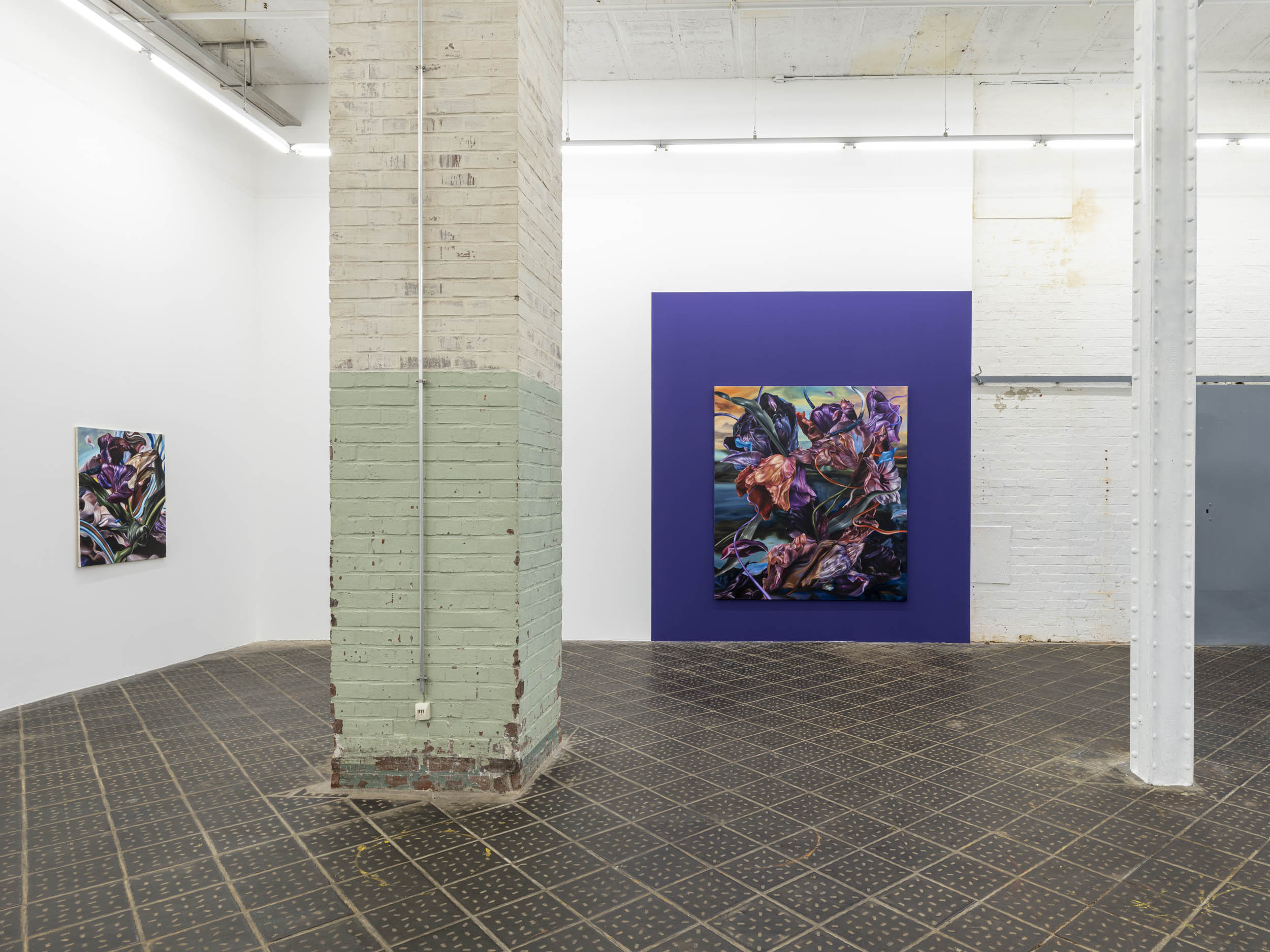
Text by Christian Hahn
The boundaries between figuration and abstraction blur in Philippa Brueck’s works fascinatingly. Her painting takes up elements of classical still life painting from the 17th century, particularly in the tradition of Baroque vanitas motifs, reinterprets and transfers them into the 21st century. Monumental, sweeping compositions emerge. Beauty versus transience - eternity versus the moment - analogue versus digital!?
Philippa Brueck’s artistic path began with a fascination for theatre painting. Her interest in stage design and «theatrical» pictorial compositions are the cornerstone of her art. Philippa Brueck studied theatre painting at the Dresden University of Fine Arts from 2013 to 2017. She expanded her artistic spectrum by studying at the HAW Hamburg where she specialised in painting, refined her formal language and developed her painterly expression.
The tension between figuration and abstraction pervades Brueck’s work in a way that draws the viewer into a whirlpool of visual discoveries. Nature appears as a central motif and is celebrated in baroque-like compositions. Philippa Brueck describes the transition, the change, in her works as «floating». It not only describes the shapes, colours and details in her paintings, which radiate movement and dynamism, but also embodies the transitions between growth and decay, between blossoming and decay, between endings and new beginnings. For her, «floating» symbolises the unstoppable course of nature, never-ending change and the eternal cycle of life.
Symbioses, metamorphoses and transformations emerge, in which fragments of plants and flowers form abstract figures and bodies. This organic formal language creates an associative space that invites the viewer to delve deeper into the visual language. The dynamism of her depictions captures the cycle of nature and at the same time has a digital effect. A reality in flux. A nature that evaporates. Or is it the perception that is changing? A perception and knowledge that no longer aims for emotional depth and experience, but is focused on maximising information and data. Nature as an information carrier, as a data pool. The vanitas painting as a «still life with symbolic objects that conveys a message about the transience of earthly life in contrast to the permanence of Christian values» must be newly interpreted. Data is eternal - only earthly life is tangible. CRISPR/Cas instead of Christian values.
The effect of Philippa Brück’s paintings can be described as surreal, but it is a new reality - caught between «analogue nature» and «digital reality» which appears surreal. To do justice to the newly created reality, the motifs of the paintings break free from the shackles of the laws of nature and open doors to imaginary gardens. Colours and forms are in a constant state of tension in her works. She deals freely and associatively with the depiction of nature. The result is an expressive realisation that leads to a pictorial world of its own that seduces the viewers and captivates them with its dynamism.
Philippa Brueck’s works show a new reality. A painting that is committed to traditional works on the one hand, but whose conception, on the other hand, refers to the digital world. A painting that refers to the 17th century as well as the 21st century. The high artistic quality of her work shows that Philippa Brueck succeeds in this balancing act. With her visual language, the artist creates a space that invites the viewer to explore the beauty and complexity of nature - the new reality in all its facets.
(Translation: Liam Floyd)